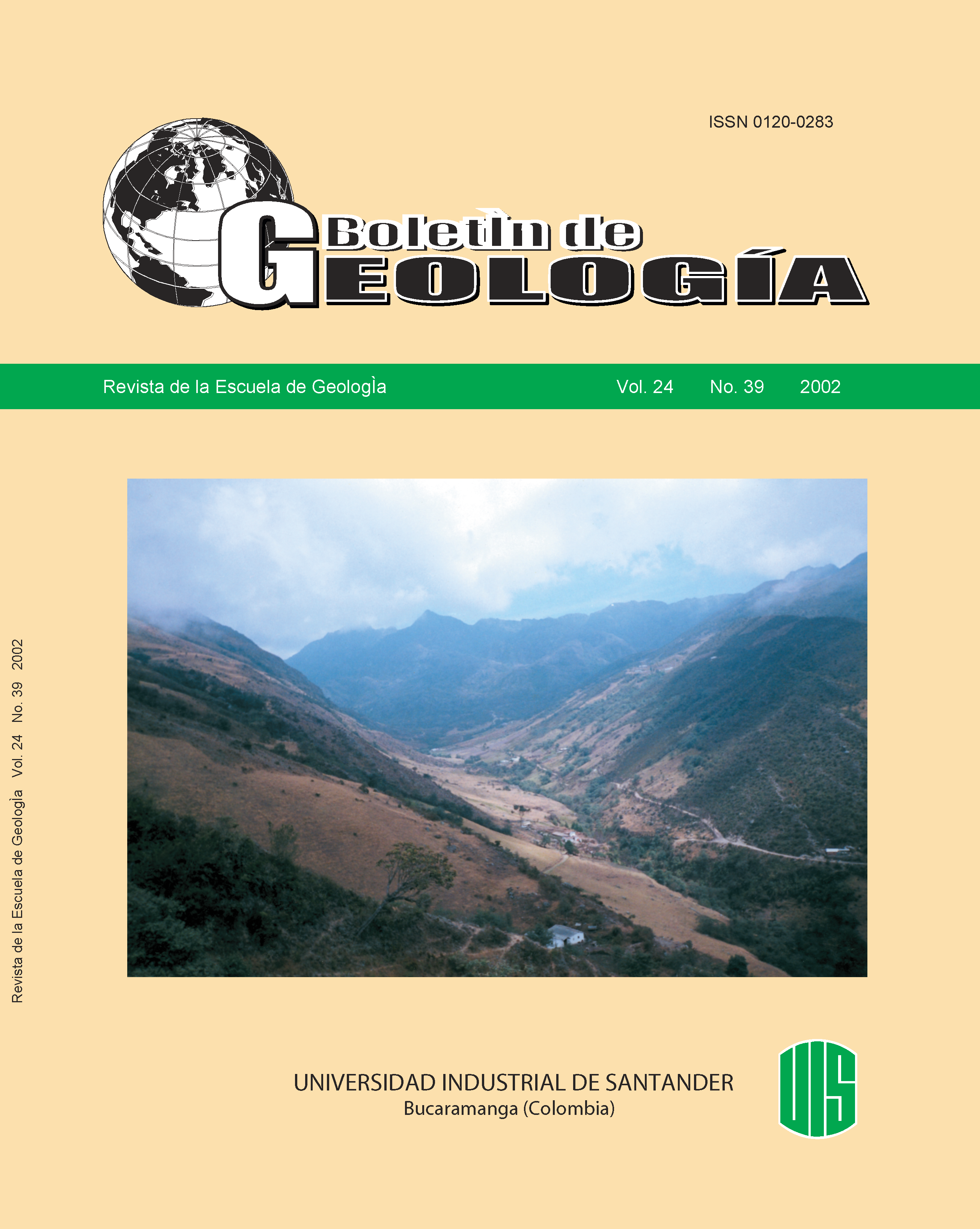Cálculo de la probabilidad absoluta de una nueva erupción en la isla de Ischia (Italia)
Published 2002-06-04
Keywords
- Ischia,
- natural hazard,
- natural risk,
- volcanic risk
How to Cite
Abstract
The isle of Ischia is the largest and the more populous of the Neapolitan Archipelago. It forms part of the volcanic complex of the middle-western Italian coast and its activity is related to the presence of deep fractures, associated to the aperture of the Tirreno sea, which began ten million years ago. The record of several historical eruptions reflects the possibility that in the future not so far could be produced a new volcanic event.
The calculation of this possibility represents an essential estimation to evaluate adecuately the impact that can be occasioned when the volcanic activity starts again in the isle; in fact, in a next paper, the results reached in the present study will be used to evaluate the volcanic risk in Ischia.
One of the aspects of analyses has taken into account the reconstruction of a recorder of eruptions that have been verified in the last 55.000 years, this date coincides with the emission of the Tufo Verde, one of the classification scheme proposed by Newhall and Self (1982), to each eruption has been assigned a intensity index, VEI, in order to divide all the record of classes. As follows, by applying the Poisson’s statistics, it has determined the absolute probability with which it can be produced a volcanic event of each class of VEI in a lapse of time of ten years.
The results reflect that the value of probability of eruption is not high; however, is should no be underestimated, specially with respect to two peculiar characteristics of this territory that influxes directly on the grade of volcanic risk: its high touristy flux and its insular character.
Downloads
References
Chiesa, S., Poli, S., Vezzoli L. (1986): Studiodell'ultima eruzione storica dell'isola d'Ischia: la colatadell'Arso 1302. Dipartimento di Scienze della Terra,Università di Milano, Centro Alpi Centrali, CNR,Milano
D'Andrea, M. (1993). Valutazione del RischioVulcanico nei Campi Flegrei. Tesi, Università diNapoli
Maino, A. y Tribalto, G. (1971). Rilevamentogravimétrico di dettaglio dell'isola d'Ischia (Napoli).Boll. Serv. Geol. d'Ital., Vol. 92, pp. 109-123
Mattera, M. (1995). Valutazione del RischioVulcanico Nell'isola D'Ischia, Tesi di Laurea, Facoltadi Scienze Matematiche, Fisiche e Naturali,Universita Federico II, Napoli, p. 128
Newhall, C.G., y Self, S. (1982). The VolcanicExplosivity Index (VEI): an estimate of explosivemagnitude for historical volcanism. J. Volcanol. andGeotherm., Vol 87, pp. 1231-1238
Paterne, M., Guichard, F., Labeyrie, J., Gillot, P.Y.Duplessy, J.C. (1986). Tyrrhenian Seatephrochronology of the oxygen isotope record forthe past 60.000 years. Marine Geology, Vol. 72, pp.259-285
Scandone, R., Giacomelli, L. (1998). Vulcanologia,principi fisici e metodi d'indagine. Liguori Editore.Napoli, p. 642
Sheridan, M.F. (1979). Emplacement of pyroclasticflows: a review. In: Ash-flow tuffs (C.E. Chapin andW.E. Elston, Eds.), Geol. Soc. of Am., Special Paper,Vol. 180, pp. 125-136.
Siebert, L, Glicken, H., Ui, T. (1987). Volcanichazards from Bezymianny and Banday-tipe eruptions.Bull. Vulcanol, Vol. 49, pp. 435-459.Smithsonian Institution/SEAN (1989). GlobalVulcanism. Smithsonian Institution, Prentice Hall,New Jersey
Vezzoli, L. (Ed.) (1988). Island of Ischia. CNRQuaderni de La Ricerca Scientifica, nº 114, Vol. 10,p. 133
Walker, G.P. (1973). Explosive volcanic eruptions, anew classification scheme. Geol. Rund. Vol. 62, pp.431-446.
Wickmann, F.E. (1966). Repose period patterns ofvolcanoes. V: General Discussion and a TentativeStochastic Model, Arkiv fur Mineralogi och Geologi.4 H 4, pp. 291-366
